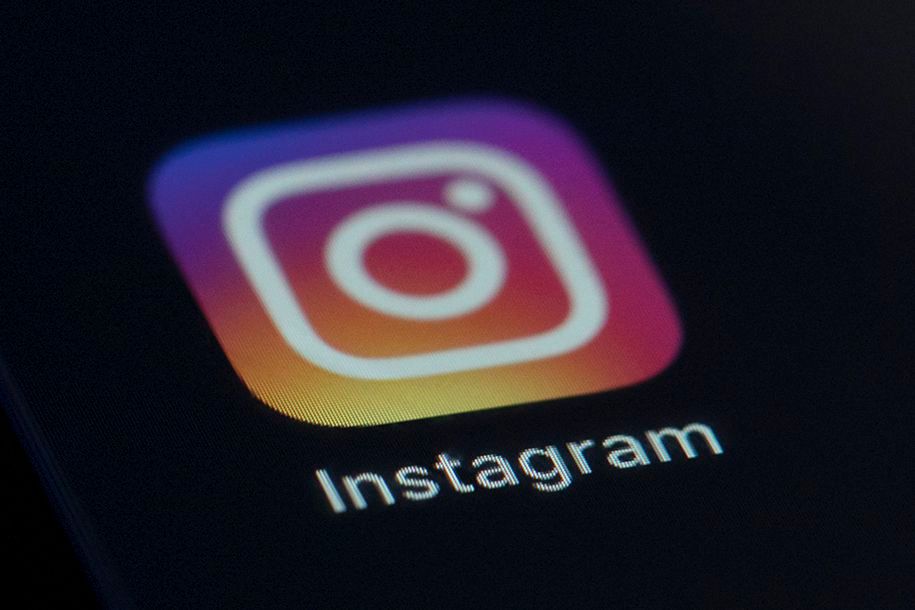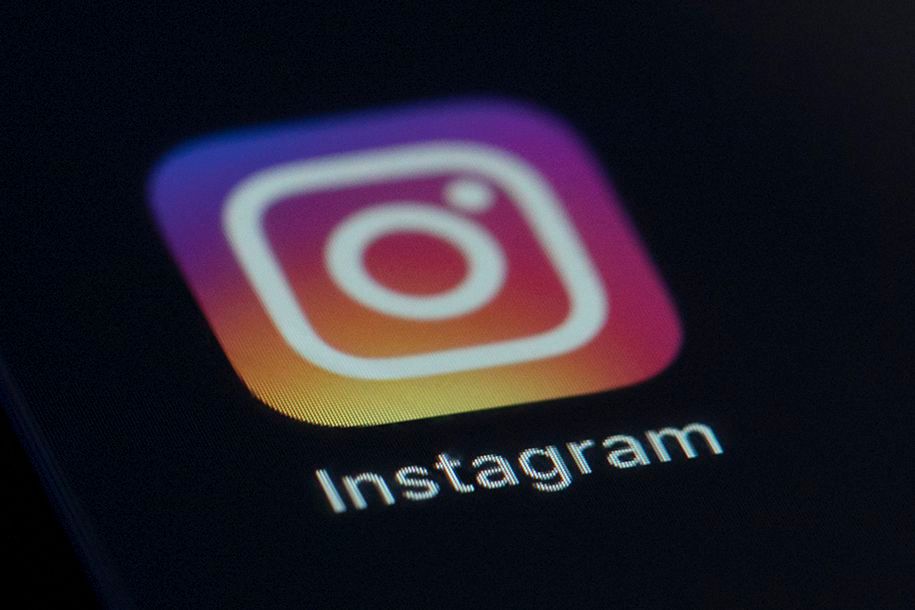[ad_1]

On Monday, October 21, Instagram hosted a roundtable discussion with some 20 artists and museum leaders to discuss concerns about the platform’s nudity policies as they relate to art.
JENNY KANE/AP/SHUTTERSTOCK
Monday, October 21, Instagram held a closed-door roundtable in New York about its community guidelines and content moderation policies as they relate to nudity in art, ARTnews has learned.
The private discussion, which included both prominent and emerging artists and museum leaders, took place in the wake of protests and petitions from artists who have alleged that their work has been censored by the image-sharing platform, which is owned by Facebook.
The roundtable, held at Instagram’s headquarters near Astor Place in Manhattan convened about 20 people, many of whom had previously had posts removed from Instagram because of their content. Representatives from the National Coalition Against Censorship were also invited to participate.
Possible outcomes from the meetings are not yet clear, but the hope of many artists is that the talks lead to policy changes. In an interview, Stephanie Otway, a Facebook spokesperson, said that the company regularly meets with users to receive feedback about its products and to think about how it can be incorporated into its policies and products.
“Today was about meeting with the community in the art world to understand their feedback,” Otway said. “A lot of their feedback is based around our nudity policies, so we definitely felt it was a constructive day for us to think about how these policies evolve and develop in the future. I think it’s the start of a conversation between us and the art community.”
Among those attending Monday’s meeting were artists Micol Hebron, Marilyn Minter, Joanne Leah, and Siddhant Talwar. Painter Betty Tompkins had also been invited but did not attend, and instead sent a statement that she asked to be read on the record.
While participants were allowed to share news of the talks, according to Hebron and Minter, those involved were asked by Instagram to sign non-disclosure agreements meant to keep the day’s proceedings private. Members of the press were not invited. The company said that signing NDAs is standard procedure for anyone visiting any Facebook/Instagram building and was not put in effect specifically for this meeting.
Tompkins told ARTnews that she had been contacted by Facebook about the roundtable around three weeks ago and didn’t immediately know how to respond. Because she wouldn’t be able to attend in person, Tompkins asked if she could send a statement that would be read aloud, and the company agreed.
Tompkins said in that statement that, because of Instagram’s major role in the art world, its current guidelines are prohibitive to artists “whose work is challenging or thought-provoking.” (She said she plans to post her full statement to Instagram later in the week.)
Earlier this year, Tompkins had her Instagram account deleted after she posted a layout from an exhibition catalogue that included a black-and-white reproduction of one of her “Fuck Paintings” that is based on pornography and in the collection of Paris’s Centre Pompidou. (Her account was later restored.)
“Instagram has nominated themselves to be the online voice for the art world,” Tompkins continued. “And they’ve succeeded. You can’t be active in the art world without a voice on Instagram.”
Nora Pelizzari, the NCAC’s director of communications, echoed Tompkins, saying that she was pleased that emerging artists had been invited to participate. “When we’re talking about art on a platform like Instagram, established museums and artists use Instagram for disseminating their work, for gaining great exposure, etc.,” she told ARTnews, “but they also have other platforms on which do that, whereas early career artists depend on Instagram in a very particular way. They don’t necessarily have access to galleries, museums, and the ‘art world’ as it exists. Ideally what Instagram does is remove the hierarchy of who gets to be an artist.”
“Instagram and Facebook had no trouble admitting their mistakes,” Minter said in an email to ARTnews after the meeting. “They have made progress. I felt like this was an exchange of ideas from forward-leaning people trying to do the right thing. These were difficult conversations from well-meaning people trying to find solutions. Some of the artists had grievances but there was no hostility. If we are going to grow and change we need these conversations. I left feeling that this topic is a work in progress.”
In an interview prior to the meeting, Hebron said that Instagram had been vague—perhaps intentionally so—prior to the meeting, and had not sent participants an agenda of the day’s events beyond saying that there would be a keynote presentation and time for each artist to discuss their experiences with Instagram. While a list of participants was circulated to invitees, Hebron said, they were told not to make that information public out of respect for their colleagues’ privacy.
Hebron added that she thought that Instagram’s insistence on having participants sign NDAs and have the discussion happen in private represented a missed opportunity. “That they’ve already has us sign an NDA is crazy,” Hebron said. “If they were smart, it would be live-cast and streamed. It should really be a community conversation.”
Tompkins, who was not asked to sign an NDA, said she found it absurd that Instagram expected the participating artists to stay silent. “If you’re bringing artists into a room and telling them they can’t talk about a couple of hours they’ve lived through, you’re dreaming,” she said. “This is our job as artists: to break the rules. That’s what makes it art—it doesn’t conform.”
Pelizzari said that the day began with representatives from Facebook and Instagram explaining their policies and their reasoning behind them. “Facebook was trying to make it clear that they respect and privilege voice on their platforms, above all else,” Pelizzari continued, “What the artists were pushing back on was by saying, ‘Your policies, and how they’re implemented, don’t necessarily reflect that.’ It seemed that Facebook was very interested in engaging that conversation, but I will say that willingness to make hard commitments was lacking.”
Otway, the Facebook spokesperson, said, “For us it’s a case of taking away the feedback that we heard, and bringing it to the broader teams to understand what we can and can’t implement. So nothing specific at the moment. The main thing is collating what we heard, any commonalities that we heard that we think would be particularly useful in our policy development process.”
Though the group of participants was diverse in terms of age and race and ethnicity, Hebron said, she felt that not enough men were part of the discussions. Three men and one trans person were among the group of 20 invitees who participated in Monday’s discussion. Facebook said that it did make efforts to have a diverse group of people as it relates to gender, but would not comment on specifics, saying it wanted to maintain the privacy of participants.
“I think this issue should concern men—it’s a community concern,” Hebron said. “The idea that only women should be concerned with these problems is pretty sophomoric and myopic. It also affects non-binary, queer, and trans folks. This should concern everyone, not just the bodies that are being oppressed and censored.”
The largest point of contention between Instagram and artists has been nudity, specifically the female nipple, as it appears in artworks. Artists and other arts advocates have also called for more transparency about when posts or accounts are removed and why some accounts are given less visibility in the app’s explore and hashtag functions.
Currently, Instagram’s community guidelines regarding nudity read, “We know that there are times when people might want to share nude images that are artistic or creative in nature, but for a variety of reasons, we don’t allow nudity on Instagram. This includes photos, videos, and some digitally-created content that show sexual intercourse, genitals, and close-ups of fully-nude buttocks. It also includes some photos of female nipples, but photos of post-mastectomy scarring and women actively breastfeeding are allowed. Nudity in photos of paintings and sculptures is OK, too.”
Tompkins read these guidelines prior to writing her statement. “At first I laughed, and then I got very angry,” she said. “I was furious. After putting us through all of this, it’s horseshit, when it’s clear that they haven’t read their own guidelines.”
Leah, a photographer who circulated a Change.org petition calling for changes to how Instagram handles nudity that garnered some 1,000 signatures, said that it was important that the guidelines be updated to allow for nudity in photography and documentation of performance art.
“They have concerns about photography being pornographic,” Leah said. “But, I think they are completely eliminating photography as an art form. That they allow it in painting and sculpture is invalidating artists’ work and art history. It’s important to come up with a distinction between pornography and fine art photography that includes nudity.”
Another topic discussed at length in the roundtable, several sources said, was Instagram’s ability to determine someone’s gender based on photographs of their nipples, which may not match up with that person’s own gender identification.
“Facebook needs to reckon with the disproportionate negative effect that is felt by trans, gender non-confirming, and queer folks by these very binary and gendered nudity policies,” Pelizzari, of the NCAC, said. “When you limit the ability of anyone who comes from an already marginalized community to talk about their own story and to share their own body you are sending a value judgment as to the value of that person, not just the value of a post on Instagram. What that does is reinforce global norms around marginalization.”
Prior to the roundtable at Instagram, Hebron spoke to the larger issues at stake within these conversations, “Not only do we have Facebook and Instagram assuming our gender based on images of our bodies, which is really troubling, but they’re also making statements about what is and isn’t art and what is and isn’t acceptable art. That has echoes from the Culture Wars of the ’80s and ’90s.”
[ad_2]
Source link

